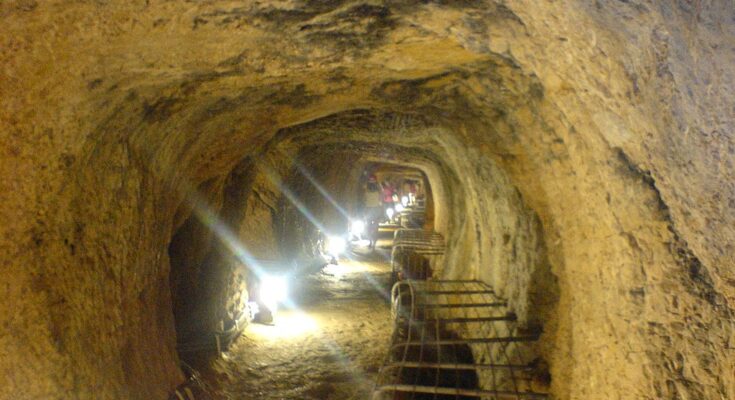Even by modern standards, the ancient Tunnel of Eupalinos on Samos, Greece is considered a marvel of engineering and craftsmanship.
Built around 550 BC, it’s one of the earliest large-scale tunnel projects in history. Over 1000 meters long, it was dug from two starting points and met remarkably close in the middle, demonstrating impressive planning and surveying techniques for the time.
Engineer Eupalinos, who designed and built it, likely used geometric principles to not only align the tunnels but also adjust their course to avoid hard rock. The tunnel functioned as an aqueduct for over 1100 years, a testament to its durability and importance to Samos’s water supply.

Even by modern standards, the Eupalinos Tunnel represents a significant feat of engineering, showcasing the ingenuity of ancient Greece.
The engineer from the city of Megara used what are now well-known principles of geometry, which were codified by Euclid several centuries later.
The tunnel is cited by Herodotus, without whom it would not have been discovered.
“I have dwelt longer upon the history of the Samians than I should otherwise have done, because they are responsible for three of the greatest building and engineering feats in the Greek world: the first is a tunnel nearly a mile long, eight feet wide and eight feet high, driven clean through the base of a hill nine hundred feet in height. The whole length of it carries a second cutting thirty feet deep and three broad, along which water from an abundant source is led through pipes into the town. This was the work of a Megarian named Eupalinus, son of Naustrophus.” (Herodotus, Histories 3.60)
Eupalinos tunnel on Samos is in the UNESCO World Heritage List
It continued to supply the town of Pythagoreion (the ancient capital of Samos) with fresh water for 1,100 years.
The tunnel took water from an inland spring, located about 52 meters (171 ft) above sea level near the modern village of Ayiades. It discharges about 400 m3 of water per day. This spring was covered over.
Two rectangular openings, each measuring 28 by 26 centimeters (11 by 10 in), feed the water into a large reservoir with a roughly elliptical ground plan. Fifteen large stone pillars support a roof of massive stone slabs. The spring was thus completely concealed from enemies. The construction of this reservoir seems to have caused the outlet of the spring to subside by several meters.
The tunnel is inscribed on the UNESCO World Heritage List along with the nearby Pythagoreion and Heraion of Samos, and it was designated as an International Historic Civil Engineering Landmark in 2017.



